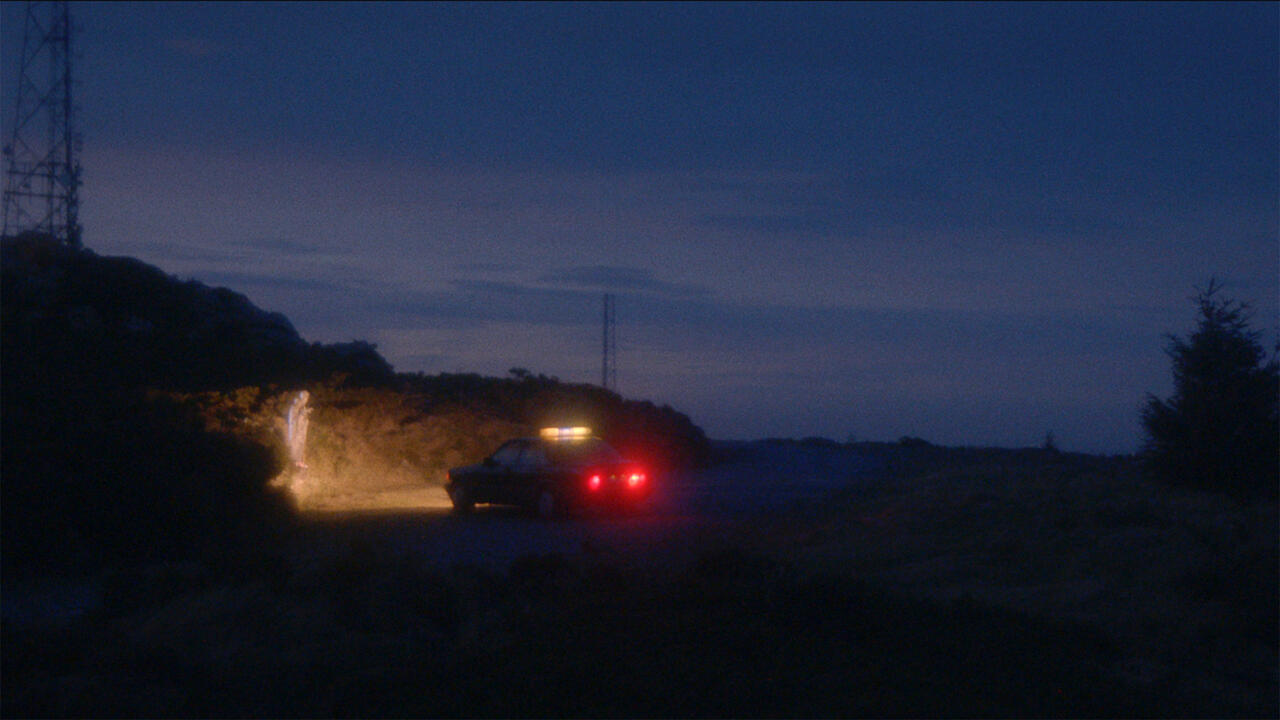Mairead O’hEocha
mother’s tankstation limited, Dublin, Ireland
mother’s tankstation limited, Dublin, Ireland

Mairead O’hEocha’s paintings take peculiar, beguiled pleasure in the low-key scenes they calmly depict. Some of her best pictures have been prompted by quotidian curios or fleeting revelations: a gorilla ornament at a garden centre; a merry-go-round glowing against night sky; a petrol station’s circus-mirror reflection on the surface of a streaming canal. Each discovery is met with measured, distracted delight. Each becomes a quietly spellbound painting: distilled and designed as a tidy arrangement of zesty highlighter tones against cooler, moodier shades. Sometimes, their ostensibly good-humoured outlook seems comparable to the wide-eyed crediting of everyday marvels in Robert Walser’s stories, a writer for whom, as William H. Gass has said, ‘everything is fresh and astonishing; to him everything presents a pleasant puzzle.’ Her paintings are immaculately concentrated records of insouciant noticing, but they contain trace levels of melancholy, too. O’hEocha’s worldview is intermittently enchanted, but not innocent. (Gass scatters comparable adjectives around Walser’s style: ‘sad, removed, amused, ironic, obsessively reflexive’.)

If, at times, O’hEocha’s work evokes moments of fugitive serenity – the tipsy late-night peacefulness suggested by that luminous petrol station scene, for instance – there is frequent severity, too. In Hoarding, Lights and Rain (2014), the bright, diagonal streaks of a downpour are more like laser-beams than raindrops. Very beautifully, they slice the picture to pieces. The bizarrely radiant colours of Chopped Trees, Castle Leslie (2014) – lively stripes of lilac, lime green, baby blue and more – decorate the sundered remains of a destroyed tree-trunk, absurdly sugar-coating a brutal image. It’s sweetly jarring, like cracking your tooth on hard candy. Despite such jolting contrasts, the variously tough and tender effects of these paintings feel mostly unforced. And however downbeat things get, a degree of light-heartedness – even light-headedness – persists. Rarely does O’hEocha seem inclined to scale the slopes of a grand theme. Rather, she crafts gorgeous, offbeat odes to low-lying, ordinary landscapes, prizing the calculated inconsequentiality of her subjects.
O’hEocha’s newest paintings – seven of which feature at Mother’s Tankstation – also seek latent vitality in undervalued material, this time by turning her admiring attention to that most banal of art genres: the still life. Cryptically titled ‘Blackbirds in the Garden of Prisms’ (all works 2016), this body of effulgent botanical painting is, perhaps, more deliriously sensuous than much of the artist’s work to date. Zoom in on the bursting, drooping blooms of Plant Dressage with Escaped Cobra – a medley of scarlet, creamy white, and pale blue flowers against a glamorously intense black background – and we see the intimate micro-world of O’hEocha’s reticently excited brushwork: dainty smears, smudges and scribbles that bring these fragile organic forms into lustrous being. Paintings such as Omnivourasaur and Ring Flash Bouquet are bravura outcomes of O’hEocha’s apparent relish in the task of representing, and re-imagining, differently sinuous floral growths. Still life, pursued with such rapt persistence, must be an exhilarating aesthetic test – despite, or even because of, its historically circumscribed status. (O’hEocha has in mind the genre’s relevance to the erstwhile predicament of women artists, who were prevented from partaking in education relating to the ‘higher’ classifications of representational painting.)

‘Blackbirds in the Garden of Prisms’ demonstrates, in its idiosyncratic explorations of still life’s lasting potential, a new type of commitment and accomplishment in O’hEocha’s work. And if I’m impressed rather than fully charmed by these paintings – I miss the pleasurable unpredictability of what might be casually encountered beyond the studio – they remain curiously absorbing, calling to mind, in their probing plurality, the poet Alice Oswald’s gnomic comment that flowers are ‘recognizably ourselves elsewhere’. Painterly and poetic flower-arranging, Oswald says, might be a way to create a ‘record of someone’s wild or wayside selves’. In this way, perhaps, these works might best be understood as ‘growers’.






















